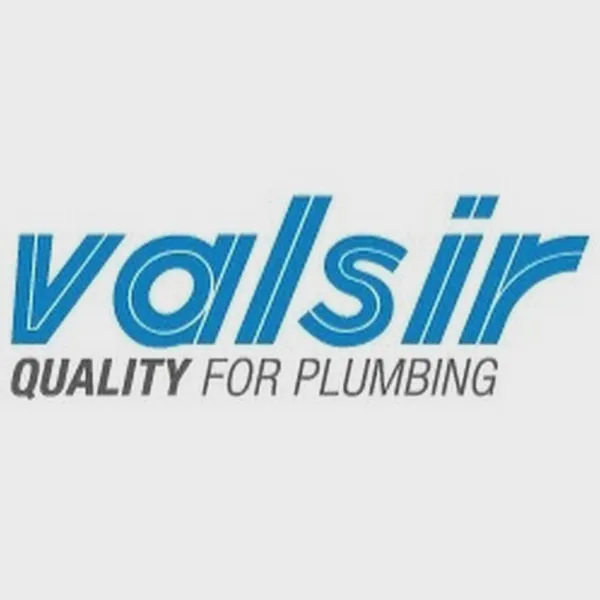Valsir S.p.A.: product range and EPD coverage
Valsir is a familiar name on plumbing specs, from quiet waste stacks to in‑wall cisterns and multilayer supply lines. If you sell or manage these products, here is the short, practical readout on what they make, how broadly they publish Environmental Product Declarations, and where coverage still leaves room to win more specs.


Who Valsir is, in one minute
Valsir S.p.A. is an Italian manufacturer best known for building drainage systems, siphonic roof drainage, in‑wall cisterns, and multilayer supply lines. The portfolio spans residential, commercial, and healthcare projects. Their sustainability narrative is visible on the company site, which includes recycling operations and a biennial report you can explore here (Valsir sustainability page).
What they sell, roughly how much
Across waste and drainage systems like Triplus, Blackfire and HDPE, siphonic roof drainage under Rainplus, concealed cisterns such as Tropea S, Cubik S and Winner S, and multilayer supply systems like Pexal, Mixal and Bravopress, the range runs into the hundreds of SKUs. Think pipes, fittings, frames, actuators, valves and accessories, spread across several product categories rather than a single‑product pure play.
EPD footprint today
Valsir has multiple product‑specific EPDs current under European program operators. Public records show EPDs for PP3 polypropylene drainage pipes and fittings with validity to March 2027, for HDPE drainage pipes and fittings valid to April 2028, and for the Rainplus siphonic drainage system valid to April 2028. These align to EN 15804 and are third‑party verified, which is what project teams expect when they must document embodied carbon. (EPD Italy, 2025) (EPD Italy PP3, 2025) (EPD Italy HDPE, 2023)
There are also EPDs for concealed cisterns like Tropea S and Cubik S, plus materials from Valsir Recycling such as recycled PE and PP compounds with validity to June 2029, useful for demonstrating circular content in supply chains. (EPD Italy, 2023; EPD Italy, 2024)
Coverage by category, at a glance
Drainage stacks, siphonic roof drainage, and several cistern models are covered. Multilayer supply lines have EPDs for Pexal variants, which supports potable water distribution specs where product‑specific data is requested. The pattern suggests good coverage across core plumbing touchpoints that show up in LEED‑oriented projects and public tenders.
Notable gaps that still matter
We did not find a published EPD for Silere, Valsir’s flagship sound‑insulating waste system, in the major operator registries we checked as of November 20, 2025. That absence can be costly on projects where any non‑EPD product triggers conservative default factors and a penalty in whole‑building LCAs. In these situations, a rival with a product‑specific EPD tends to be the safer specification.
The “spec off” reality in this category
Geberit is a frequent competitor on both cisterns and sound‑insulated stacks. The company lists valid EPDs for PE drainage, Silent‑db20, Silent‑PP and the Duofix WC installation element, among others, in its most recent sustainability reporting. That gives specifiers a straightforward path when documentation is mandatory. (Geberit Annual Report, 2024)
If Silere is in your top sellers, note that Geberit Silent‑db20 and Silent‑PP have current EPDs available through EPD Hub, which can tilt decisions in hospitals, education, and offices where acoustic performance and enviromental documentation are both core requirements. (EPD Hub Silent‑db20 fitting, 2025)
Commercial upside of closing the gaps
A single product‑specific EPD often unlocks participation in bids your team quietly avoids today. When a stack system or cistern line lacks an EPD, sales reps either work around those projects or face a documentation hurdle late in the cycle. The moment that EPD is live and searchable, you remove friction, reduce substitution risk, and win time on value instead of paperwork.
How to move fast without burning the team out
Pick an LCA partner that runs the data‑collection sprint for you, coordinates with your plant teams, and publishes through your preferred operator. Ask for clear guidance on the PCR choice used by your competitors, a reference year plan, and a publication timeline that aligns with product launches. The right process should feel white‑glove, so your engineers and product owners stay on core work.
Bottom line for Valsir watchers
Broad coverage exists across drainage stacks, siphonic roof drainage, cisterns, and multilayer supply, backed by European operators and EN 15804. The standout opportunity is a product‑specific EPD for Silere. Closing that gap would neutralize a key competitive lever and strengthen specification resilience in noise‑sensitive buildings where EPDs are now table stakes. (EPD Italy, 2023; EPD Hub, 2025)
Frequently Asked Questions
Which Valsir product families currently have public EPDs and typical validity windows?
Public operator records show PP3, HDPE, Rainplus, Tropea S, Cubik S, Winner S, and Pexal variants, typically five‑year validity from issue, aligned to EN 15804 and third‑party verified. (EPD Italy, 2023–2025).
Does Valsir publish EPDs for recycled resin compounds that feed its pipes?
Yes, records list recycled PE and PP compounds from Valsir Recycling valid to June 2029, useful for circular‑content narratives. (EPD Italy, 2024).
What is the biggest EPD gap relative to common competitors?
Silere appears to lack a published EPD in major registries as of November 20, 2025. Geberit lists EPDs for Silent‑db20 and Silent‑PP, which can sway specs where documentation is mandatory. (Geberit Annual Report, 2024; EPD Hub, 2025).
